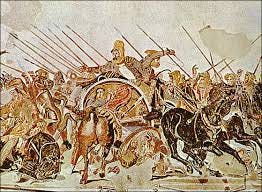To identify any particular “race” or particular individuals with conquest, settlement, colonialism, and their racist justifications misses the point and distracts from the issue that we must address as a precondition for further human economic, scientific, and moral progress. The essential point is twofold. First, conquest has been central to human history for the past 5,000 years, and it has been an important motor for human economic and moral development. Secondly, conquest leaves persistent structures that generate inequalities, and it is these structures that must be intelligently transformed by cooperative human activity.
The recently released fourth edition of the Encyclopedia of Invasions and Conquests aids our understanding of the issue. To be sure, it has limitations that reflect the limitations of human knowledge. First, we know a whole lot more about the pre-modern history of conquest in the Middle East, Asia, and Europe than we know about conquest in Africa a…


